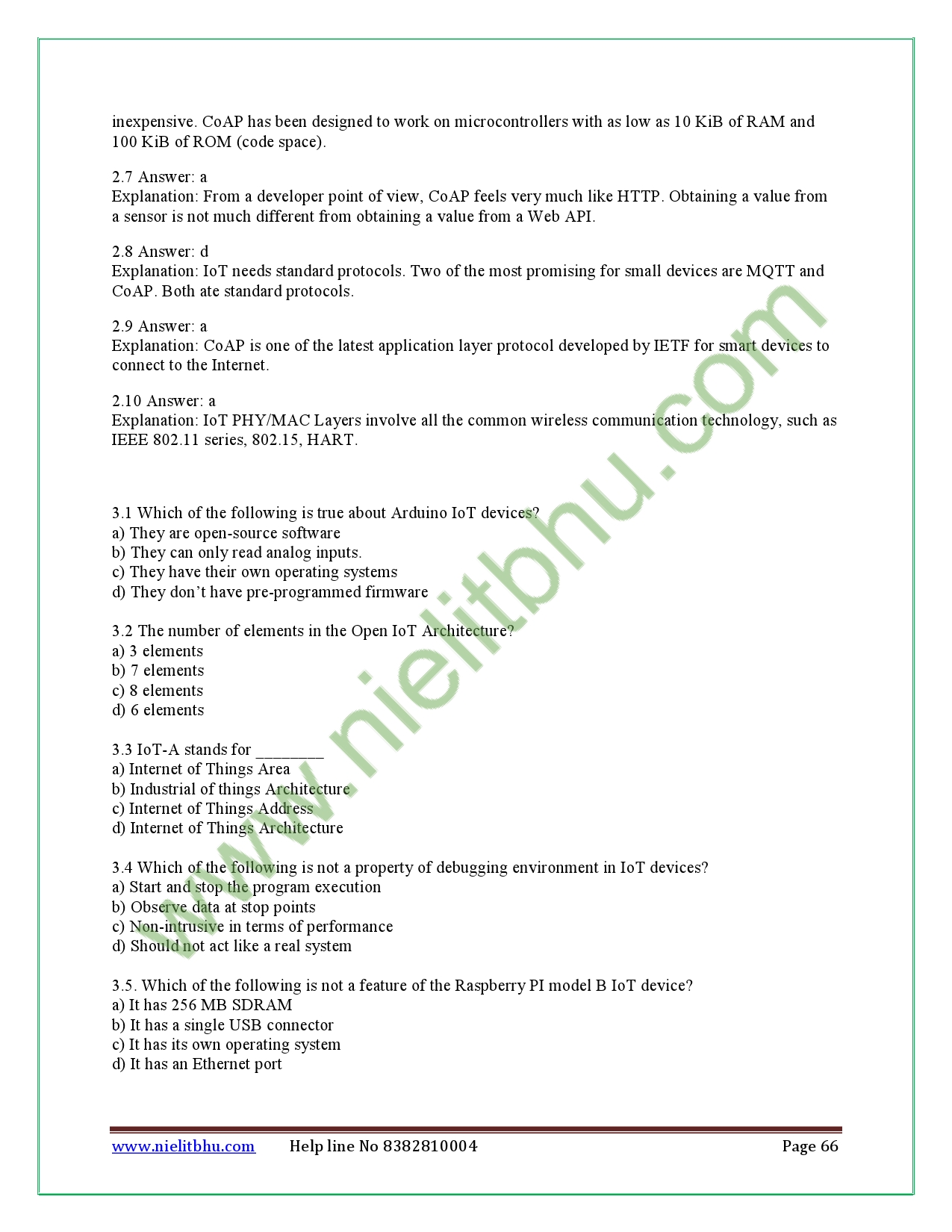Description
The module is designed to equip the students to understand the basics of the connected world that is the Internet of Things (IoT) and its applications. IoT primarily refers to the connected and smarter world having physical and virtual objects with some unique identities. IoT applications span across domains of industrial control, retail, energy, agriculture, etc. According to expert forecasts, the IoT ecosystem will have 50 billion devices/things by 2020. This module provides the theoretical and practical aspects of interfacing sensors and actuators, making an informed world of Things speaking to each other. The different types of communication modes and models are discussed in detail. The in-depth knowledge of software and packages is provided to make applications in the IoT paradigm.
What will you learn
- Understand how connected devices work together to update other applications
- Acquire knowledge to interface sensors and actuators with microcontroller-based Arduino platform
- Writing C programs in Arduino IDE
- Understand the Communication between microcontroller and PC using serial communication
- Build IoT-based applications and understand how data flows between things
- Understand how electronic devices control electrical appliances working at 220v AC
- Understand the security aspect of IoT devices
- Enhance skill set towards better personality development
Detailed Syllabus
(i) Introduction to Internet of Things – applications/devices, protocols, communication model
Introduction – Overview of Internet of Things(IoT), the characteristics of devices and applications in IoT ecosystem, building blocks of IoT, Various technologies making up IoT ecosystem, IoT levels, IoT design methodology, The Physical Design/Logical Design of IoT, Functional blocks of IoT and Communication Models.
(ii) Things and Connections
Working of Controlled Systems, Real-time systems with feedback loop e.g. thermostat in refrigerator, AC, etc. Connectivity models – TCPIP versus OSI model, different types of modes using wired and wireless methodology, The process flow of an IoT application.
(iii) Sensors, Actuators, and Microcontrollers
Sensor – Measuring physical quantities in the digital world e.g. light sensor, moisture sensor, temperature sensor, etc.
Actuator – moving or controlling system e.g. DC motor, different types of actuators
Controller – Role of microcontroller as a gateway to interfacing sensors and actuators, microcontroller vs microprocessor, and different types of microcontrollers in the embedded ecosystem.
(iv) Building IoT applications
Introduction to Arduino IDE – writing code in sketch, compiling-debugging, uploading the file to Arduino board, the role of the serial monitor.
Embedded ‘C’ Language basics – Variables and Identifiers, Built-in Data Types, Arithmetic operators and Expressions, Constants and Literals, assignment.
Conditional Statements and Loops – Decision making using Relational Operators, Logical Connectives – conditions, if-else statement, Loops: while loop, do while, for loop, Nested loops, Infinite loops, Switch statement.
Arrays – Declaring and manipulating single dimension arrays
Functions – Standard Library of C functions in Arduino IDE, Prototype of a function: Formal parameter list, Return Type, Function call.
Interfacing sensors – The working of digital versus analog pins in Arduino platform, interfacing LED, Button, Sensors-DHT, LDR, MQ135. Display the data on Liquid Crystal Display(LCD), interfacing keypad
Serial communication – interfacing HC-05(Bluetooth module)
Control/handle 220v AC supply – interfacing relay module.
(v) Security and Future of IoT ecosystem
Need of security in IoT – Why Security? Privacy for IoT enabled devices- IoT security for consumer devices- Security levels, protecting IoT devices
Future IoT ecosystem – Need of power full core for building secure algorithms, Examples for new trends – AI, ML penetration to IoT
(vi) Soft skills-Personality Development
Personality Development – Determinants of Personality- self-awareness, motivation, self-discipline, etc., building a positive personality, gestures.
Self-esteem – self-efficacy, self-motivation, time management, stress management, etiquette & manners.
Communication and writing skills- objective, attributes, and categories of communication, Writing Skills – Resume, Letters, Report, Presentation, etc. Interview skills and body language.











Jay kumar –
Best quality and question for o level exam